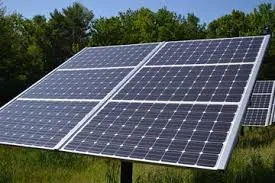Cost Analysis of a Single Solar Panel and Its Economic Benefits
Understanding the Price of 1 Solar Panel Factors and Insights
As the world shifts towards renewable energy sources, solar panels have emerged as a popular choice for households and businesses aiming to reduce their carbon footprint and lower energy costs. One prevalent question among prospective buyers is What is the price of one solar panel? This seemingly straightforward inquiry opens the door to a multitude of factors that influence solar panel pricing. In this article, we will explore these factors, provide a general understanding of solar panel costs, and consider the long-term savings associated with this investment.
The Average Cost of a Solar Panel
As of late 2023, the average price of a solar panel ranges from $150 to $300, depending on the panel’s efficiency and brand. This price typically reflects the cost only for the panel itself and does not include additional installation expenses, which can significantly increase the overall investment. When assessing the cost, it is important to note that solar panel prices have been steadily decreasing over the past decade due to advancements in technology and increased manufacturing capabilities.
Factors Influencing Solar Panel Prices
1. Technology Type Solar panels come in various types, primarily monocrystalline, polycrystalline, and thin-film. Monocrystalline panels, known for their high efficiency and longer lifespan, tend to be more expensive than their polycrystalline counterparts. Thin-film panels are usually less efficient and, therefore, cheaper.
2. Brand and Quality The manufacturer’s reputation and the quality of materials used can significantly influence the price. Established brands often command higher prices due to proven reliability and performance, while lesser-known brands may offer lower prices but at the risk of reduced efficiency or lifespan.
3. Efficiency Ratings The efficiency of a solar panel indicates how effectively it converts sunlight into energy. Higher efficiency panels can produce more electricity from the same amount of sunlight, which can justify their higher price. Homeowners considering limited roof space may prioritize efficiency, making higher-priced panels a better long-term investment.
price of 1 solar panel

4. Market Demand Regional demand for solar energy can also affect pricing. In areas where solar energy is supported through government incentives or rebates, the price of panels might be more competitive. Conversely, in regions with less demand or fewer incentives, prices may be higher due to lower competition.
5. Installation Costs The price of the solar panel itself is only one part of the overall investment. Installation costs will vary based on the complexity of the installation, the location, and the labor market in your area. On average, installation can add another $0.50 to $1.50 per watt to the total cost, which needs to be accounted for when budgeting for solar energy.
Long-term Financial Benefits
Though the initial investment may seem significant, solar panels offer numerous long-term financial benefits. By generating your electricity, you can drastically reduce or even eliminate your monthly electric bill. Additionally, many regions provide tax credits, rebates, and incentives designed to offset the upfront costs of solar installation, making it a more attractive investment.
Furthermore, solar panels can increase property value. A home equipped with solar energy systems often sees an increase in resale value, making it an appealing option for future buyers.
Conclusion
In summary, the price of one solar panel can vary widely based on several factors including technology type, brand, efficiency, market demand, and installation costs. While the average cost might range from $150 to $300 per panel, prospective buyers should consider the long-term savings and environmental benefits associated with solar energy. As technology continues to evolve and the push for renewable energy grows, investing in solar panels could prove to be one of the most advantageous decisions for both your finances and the planet. Transitioning to solar energy not only represents a financial investment but also a commitment to a sustainable future.
-
String Solar Inverter: The High-Efficiency Solution for Smart Solar EnergyNewsJul.14,2025
-
Revolutionizing Rooftop Energy with the Power of the Micro Solar InverterNewsJul.14,2025
-
Power Independence with Smart Off Grid Solar Inverter SolutionsNewsJul.14,2025
-
On Grid Solar Inverter: Powering the Future with Smart Grid IntegrationNewsJul.14,2025
-
Monocrystalline Solar Panels: High-Efficiency Power for the Future of Clean EnergyNewsJul.14,2025
-
Bifacial Solar Panel: A Smarter Investment for Next-Generation Energy SystemsNewsJul.14,2025







